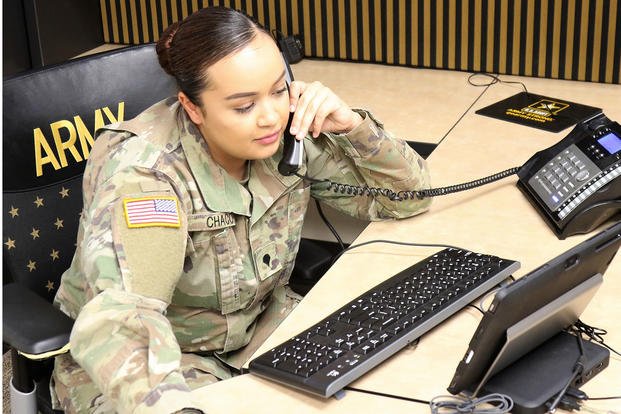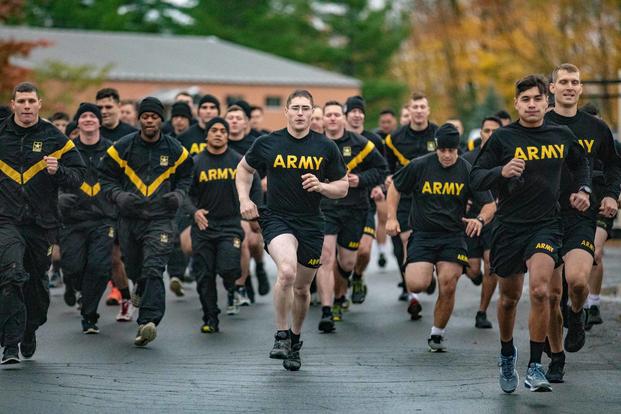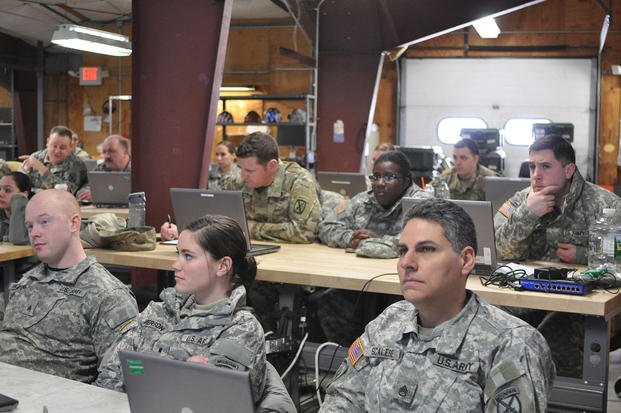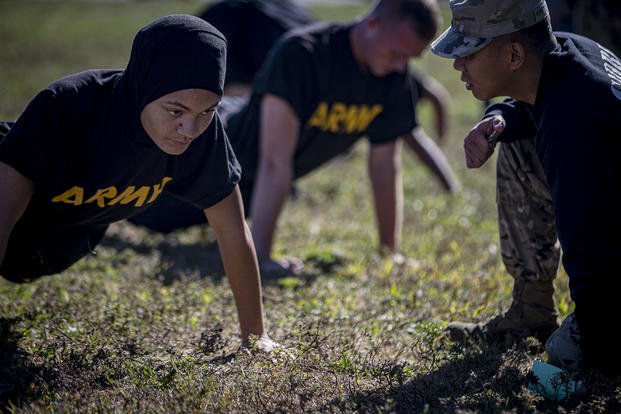More than 480,000 active-duty men and women serve in the U.S. Army, making it the largest of all the services. The Army is the branch of the U.S. military that conducts combat missions on the ground. Opportunities include jobs in mechanics and engineering, science and medicine, signal and intelligence, support and logistics, and more.
Related: Contact a Recruiter
Requirements to Join the Army
Enlisted Soldier Requirements
Enlisted soldiers make up 82% of the Army and get hands-on training, including for any career field that interests them.
To join the Army as an enlisted soldier, you must:
- Be between 17-35 years old
- Have a high school diploma, GED or plan to
- Be medically and physically fit, and in good moral standing
- Hold U.S. citizenship or be a permanent resident with a valid Green Card
- Earn a minimum score on the Army's placement exam
Officer Requirements
Army officers, who make up 18% of the service, are the leaders of the force and help plan missions, take responsibility for the well-being of soldiers and make important decisions.
To become an Army officer, you must:
- Be at least 17, but under 31 in the year of commissioning as an officer
- Be medically and physically fit, and in good moral standing
- Hold U.S. citizenship or be a permanent resident with a valid Green Card
- Have a college degree by the time you're commissioned
- Complete a background check, fill out a questionnaire, be interviewed and provide records
How to Join the Army
Contact an Army Recruiter
Working with an Army recruiter is the first step to enlisting. Recruiters know the ins and outs of the service and can help you navigate the process and make important decisions along the way.
There is no obligation when working with a recruiter. They will help you decide whether the Army is right for you, and will help shed light on which job opportunities within the service might be of interest if you sign up.

Take the ASVAB
The Armed Services Vocational Aptitude Battery (ASVAB) is an aptitude test that helps soldiers narrow down which field of work is best suited for them. It is designed to evaluate your skills in several areas, including math, science, language and technical knowledge such as electronics, automotive and mechanical abilities.
The Armed Forces Qualification Test (AFQT) is part of the ASVAB test. Enlistees typically need to score at least 31 on the AFQT unless special exceptions are in place.
Read More: ASVAB Scores and Army Jobs
Pass Your Physical Exam
To join the Army, you have to pass -- and regularly keep passing -- the Army Combat Fitness Test (ACFT). The test includes six events: the deadlift, standing power throw, push-ups, sprint-drag-carry, plank and two-mile run.
The ACFT is scored on a sliding scale based on gender and age.
Choose Your Army Job (MOS)
Once you've completed basic training, it's time for your Army job training to begin. This is officially known as your Military Occupation Specialty (MOS). There are over 200 different jobs in fields, including mechanics, engineering, science, medicine, aviation, aerial defense and more.
Take the Oath of Enlistment
To be sworn into the Army, you will take the Oath of Enlistment, which is a pledge to defend the Constitution throughout your military career. If you are entering as an officer, you'll instead take the military oath of office.
Read More: The US Military Oath of Enlistment
Army Basic Training
One of the best-known aspects of the Army sign-up process is basic training, which lasts about 10 weeks and is designed to transform a recruit into a soldier, not only physically but mentally.
You'll learn about Army values and traditions, how to care for your weapon, and security and combat basics, and you'll take part in running and fitness training. Later in basic training, you'll move on to marksmanship, then tactical training, leadership skills and teamwork.
Read More: How to Take the Guesswork out of Army Basic Training
Taking the ACFT
Recruits take the Army Combat Fitness Test (ACFT) to test their physical and mental abilities. The Army fitness test, sometimes referred to as the Army PT test, is first given during basic training.
Army fitness requirements changed in 2022, when amid much controversy, the service rolled out a revamped set of ACFT standards for soldiers. The biggest specific change was changing the scoring standards for men and women in different age groups. Leg tucks were also eliminated, replaced by planks, as the event to measure core strength.
But the overall philosophy of the test also changed, from combat preparation to a general fitness assessment.
Read More: Try This Fun Pull-Up and Deadlift Workout to Prepare for the ACFT

ACFT Standards
The Army ACFT is broken down into six "events." These are the three-repetition deadlift, standing power throw, hand-release push-up, sprint-drag-carry, plank and two-mile run. The test must be conducted in that sequence. The ACFT is intended to be completed in 70 minutes or less.
ACFT scores, as mentioned above, are now customized for different genders and ages.
For example, a female soldier between 17 and 21 must deadlift 120-210 pounds while a male soldier has to lift 140-340 pounds. In that same age group, female soldiers have to run two miles between 15:29 and 23:22 minutes while male soldiers must do so between 13:22 and 22 minutes.
Related: ACFT Score Chart, Resources and How to Administer
Benefits of Joining the Army
Joining the Army comes with a variety of benefits.
Bonuses
Full-time recruits can earn a variety of bonuses for enlisting in certain jobs, such as diving, vehicle and launch system maintenance and repairs, health care, signal and intelligence work, and many other categories.
Bonuses are also available for recruits who have certain skills, and even for those who can begin basic training within 30 days. Qualification for bonuses may also be determined by test scores.
Learn more about enlistment bonuses.

Education
Recruits who attend college can join the Reserve Officers' Training Corps (ROTC), which helps pay for tuition and other expenses. Other options under the GI Bill help soldiers with a wide variety of career training.
Additionally, the Army offers a Tuition Assistance program for active-duty, Reserve and National Guard members to help pay for school or professional training.
For those with outstanding student loans, repayment and cancellation programs are available.
Learn more about the Army's educational benefits.
Money and Pay
When you join the Army, your paycheck grows as you gain more experience and rise up the ranks. The service also offers a variety of allowances that increase your total compensation. These include free or reduced-cost health care, food, housing, education and more.
Skills and Training
Any Army soldier, for free or at a low cost, can obtain licenses and certifications that can boost their career in the civilian world. Under the Army Credentialing Assistance (CA) Program, these include everything from fitness training to software.
Health Care
Health-care benefits when joining the Army represent a savings of thousands of dollars per year.
Enrollment in the Tricare health insurance program costs nothing for full-time soldiers and includes dental, vision, pharmacy and life insurance coverage. Spouses and children are also covered.
Medical care at military bases and posts is usually free. And coverage includes pregnancy, mental health and a variety of special needs.
Other Benefits
Soldiers can enjoy other cost-saving benefits by taking advantage of the services offered on base. These include things like grocery stores and auto repair centers with lower costs than the civilian world. Army bases also offer free entertainment like concerts and comedy shows, free legal services, banks and credit unions, and more.
Read More: Learn About Army Benefits
Steve Beynon and Thomas Novelly of Military.com contributed to this report.
Interested in Joining the Military?
We can put you in touch with recruiters from the different military branches. Learn about the benefits of serving your country, paying for school, military career paths and more: sign up now and hear from a recruiter near you.
















